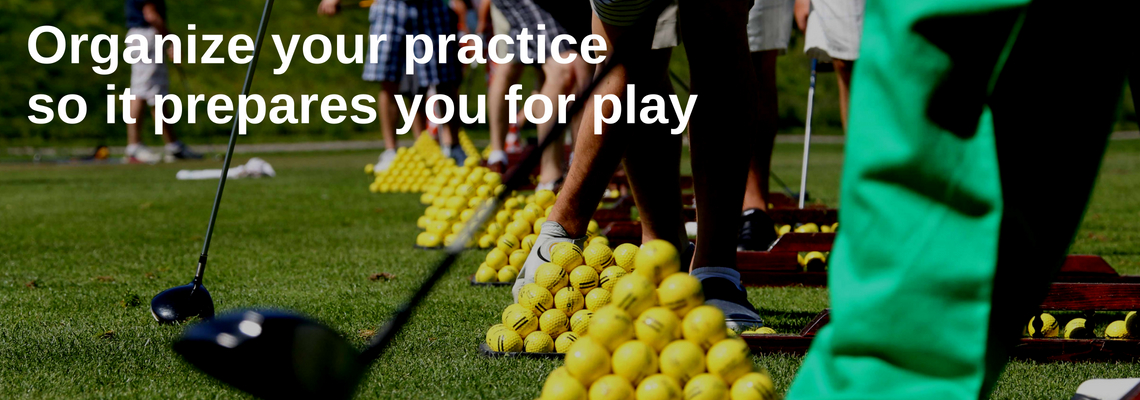Practice has very little to do with hitting a lot of balls. The best way to approach practice is with the intention to advance your game physically, technically, mentally, emotionally and strategically. Each of these elements are essential to play great, therefore they must shape how you work on your game. How you practice will impact how you play.
Think about practice this way — it provides the time and space to:
- Apply a swing change
- Learn how to more confidently hit a particular shot
- Develop and streamline your mental pre-shot routine
- Break in a new club, and more!
But practice is where golfers can really miss the mark.

That list of things you can do on the range is really important to help you improve your game. But more important than all, the bulk of your practice should be used to build trust by rehearsing how you want to play.
Many golfers practice in such a way that they get very proficient at practicing. Little or no time is invested in practicing how to PLAY great #golf. Share on X
If this has been your approach and you’ve been struggling to get your good range shots to transfer to the course, this is why.
Perhaps due to your approach, you’ve trained yourself, both physically and mentally, to hit good shots in a practice environment, but not on the course. As a result, when you get to the course you experience stress and pressure to hit good shots because on the course is where shots really matter.
To begin to close the gap you may have created in your game, below are three guidelines to help you organize your practice time so it prepares you for play.
1. Have a Plan
Avoid going through the motions of getting to range and hitting a bunch of balls. Your range time must have a well-defined purpose so you actually gain something specific from your time investment.
Focus less on hitting a certain number of balls with each club. Before you head to the range, write down 1-2 specific, small improvements that will help you advance a single aspect of your game. For example, if during your last couple of rounds, you’ve been leaving a lot of lag putts short, then this might be a part of your game that needs specific attention. You could carve out 30-40 minutes to work on a couple dynamic putting drills to improve your distance control and/or help you become more comfortable with seeing the ball roll past the hole. After all, a putt that never reaches the hole will never have a chance of dropping.
2. Keep It Real
As I mentioned above with the putting example, it’s important that you avoid spending lots of time on repetitive drills and invest your time on drills that simulate more aspects of live play. The main reason for repetitious drills is to help you ingrain technique. The benefit of dynamic drills is that they can build your confidence in your ability to execute the shot well the first time, just like you want to do on the course.
A more “real” putting drill could be limited to working on putts from 10 feet, but never hitting from the same starting location twice. This will force you to treat each shot as a new one. Therefore, in order to be successful you’ll need to go through your full routine before addressing and executing each putt. The goal must be quality over quantity.
3. Don’t Settle
Lastly, in order to gain the most from your time on the range, you need to give your best to every shot. The moment you begin rehearsing a more lax approach to your shots, because it doesn’t matter if you hit a poor shot on the range, you begin reducing your ultimate effectiveness on the course. How you practice WILL shape how you go about your shots on the course. Our every day approach is what you’ll default to when the pressure is on.
If quality on the course is truly important to you, then make the quality of every shot on the range just as important. Discipline yourself to approach every single shot with high quality focus, intention, attitude, confidence, commitment, and an expectation of success. All of this is possible when you have a great mental pre-shot routine that keeps you on track to play great.
If you’ve been hitting good shots on the range that seem to disappear when you get to the course, then I encourage you to take a close look at your practice habits. You don’t have to spend more time practicing if you simply apply more purpose to your practice time.
Leave a comment below if you’re struggling with how to get the most out of your practice, or if you’ve got a great approach that enables you to use your time well.
Leave a Reply